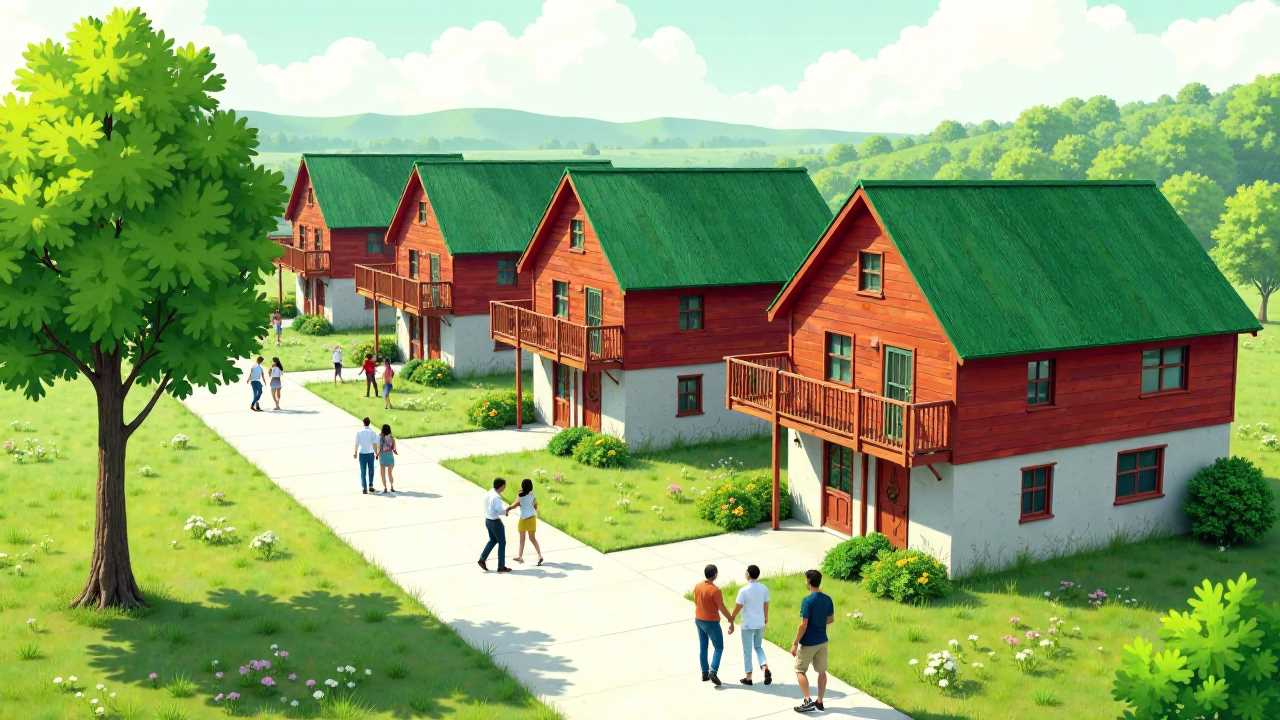
Understanding Urban Homesteading
Urban homesteading represents a lifestyle choice that merges the principles of sustainability, self-sufficiency, and community engagement within the confines of urban living. This movement encourages individuals and families to take control of their food sources, reduce their ecological footprint, and foster a sense of community through shared resources and knowledge. By embracing urban homesteading, we can cultivate a more resilient way of living that not only benefits ourselves but also our neighborhoods and the environment.
The Pillars of Sustainability in Urban Homesteading
Sustainability is at the heart of urban homesteading. It involves making conscious choices that minimize waste and promote the responsible use of resources. Urban homesteaders often implement practices such as composting, rainwater harvesting, and using organic gardening methods to create a closed-loop system that reduces reliance on external inputs. By growing our own food, we not only decrease our carbon footprint but also contribute to a healthier ecosystem.
Gardening plays a pivotal role in this sustainable lifestyle. Whether it’s a small balcony garden, a community plot, or a backyard oasis, cultivating plants allows us to reconnect with nature and understand where our food comes from. We can choose to grow a variety of fruits, vegetables, and herbs, tailoring our gardens to our dietary needs and preferences. This not only enhances our self-sufficiency but also promotes biodiversity in urban areas.
Embracing Self-Sufficiency
Self-sufficiency is another cornerstone of urban homesteading. By producing our own food and goods, we reduce our dependence on commercial systems that may not align with our values. This can include everything from canning and preserving seasonal produce to making our own cleaning supplies and personal care products. The skills we develop through self-sufficiency empower us to live more intentionally and sustainably.
In addition to food production, we can explore other avenues of self-sufficiency, such as minimalism. By simplifying our lives and reducing clutter, we create space for what truly matters. Minimalism encourages us to focus on quality over quantity, leading to a more fulfilling and less stressful lifestyle. This shift in mindset can enhance our overall well-being and allow us to invest more time and energy into our homesteading endeavors.
Building Community Through Urban Homesteading
Community is a vital aspect of urban homesteading. As we engage in gardening and sustainable practices, we often find ourselves connecting with like-minded individuals who share our passion for self-sufficiency and resilience. Community gardens serve as a hub for collaboration, where neighbors can share resources, knowledge, and even harvests. These spaces foster a sense of belonging and collective responsibility, reinforcing the idea that we are stronger together.
Participating in local workshops, farmer’s markets, and sustainability events can further enhance our community ties. By sharing our experiences and learning from others, we can cultivate a culture of support and encouragement. This network not only enriches our own homesteading journey but also contributes to the resilience of our neighborhoods.
Resilience in Urban Homesteading
Resilience is the ability to adapt and thrive in the face of challenges. Urban homesteading equips us with the tools and knowledge to navigate uncertainties, whether they arise from economic fluctuations, environmental changes, or personal circumstances. By cultivating our own food and developing self-sufficient skills, we create a buffer against external pressures.
Moreover, resilience extends beyond individual households. As we build strong community ties and share resources, we create a network of support that can withstand adversity. This collective resilience is essential in today’s world, where challenges can often feel overwhelming. Urban homesteading empowers us to take proactive steps toward a more secure and sustainable future.
Practical Steps to Start Your Urban Homesteading Journey
If you’re inspired to embark on your urban homesteading journey, here are some practical steps to get started:
1. Assess Your Space: Evaluate your living situation to determine what areas can be utilized for gardening or other homesteading activities. This could include balconies, rooftops, or community plots.
2. Choose Your Plants: Select fruits, vegetables, and herbs that suit your climate and personal preferences. Start with easy-to-grow varieties to build your confidence.
3. Learn About Composting: Implement a composting system to recycle kitchen scraps and yard waste. This enriches your soil and reduces waste.
4. Connect with Your Community: Join local gardening clubs, attend workshops, or volunteer at community gardens. Building relationships with fellow homesteaders can provide valuable support and knowledge.
5. Practice Minimalism: Declutter your living space and focus on acquiring only what you truly need. This will create a more peaceful environment and allow you to concentrate on your homesteading goals.
6. Educate Yourself: Read books, watch tutorials, and engage in online forums to expand your knowledge about sustainable practices and self-sufficiency.
7. Share Your Journey: Document your progress and share your experiences with others. This can inspire those around you and foster a sense of community.
The Future of Urban Homesteading
Urban homesteading is more than just a trend; it is a transformative lifestyle that promotes sustainability, self-sufficiency, and community resilience. By embracing this way of life, we can cultivate a deeper connection with our environment and each other. As we navigate the complexities of modern living, urban homesteading offers a path toward a more fulfilling and sustainable future. Together, we can create thriving urban ecosystems that nourish both our bodies and our communities.
 SportsHollywoodLifestyleFashionHome & GardenTrendsPrivacy PolicyTerms And Conditions
SportsHollywoodLifestyleFashionHome & GardenTrendsPrivacy PolicyTerms And Conditions
